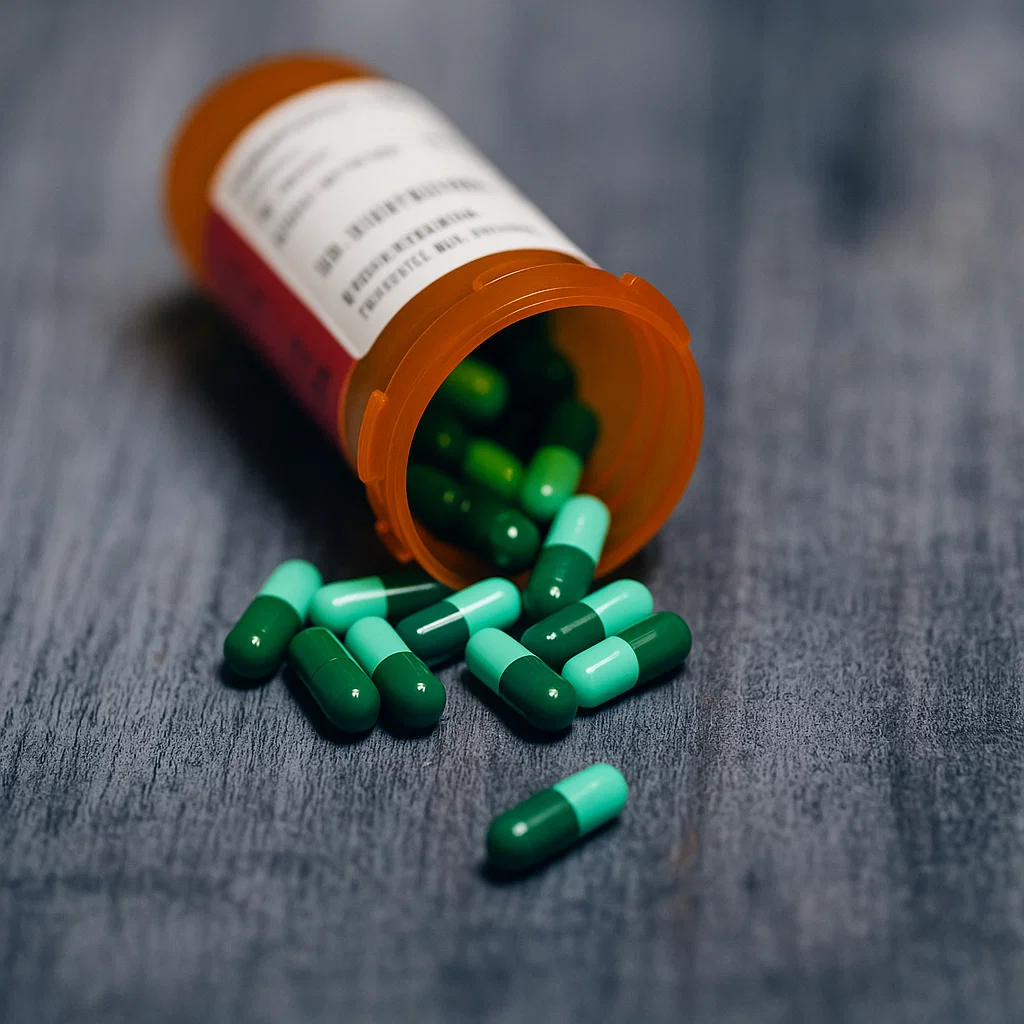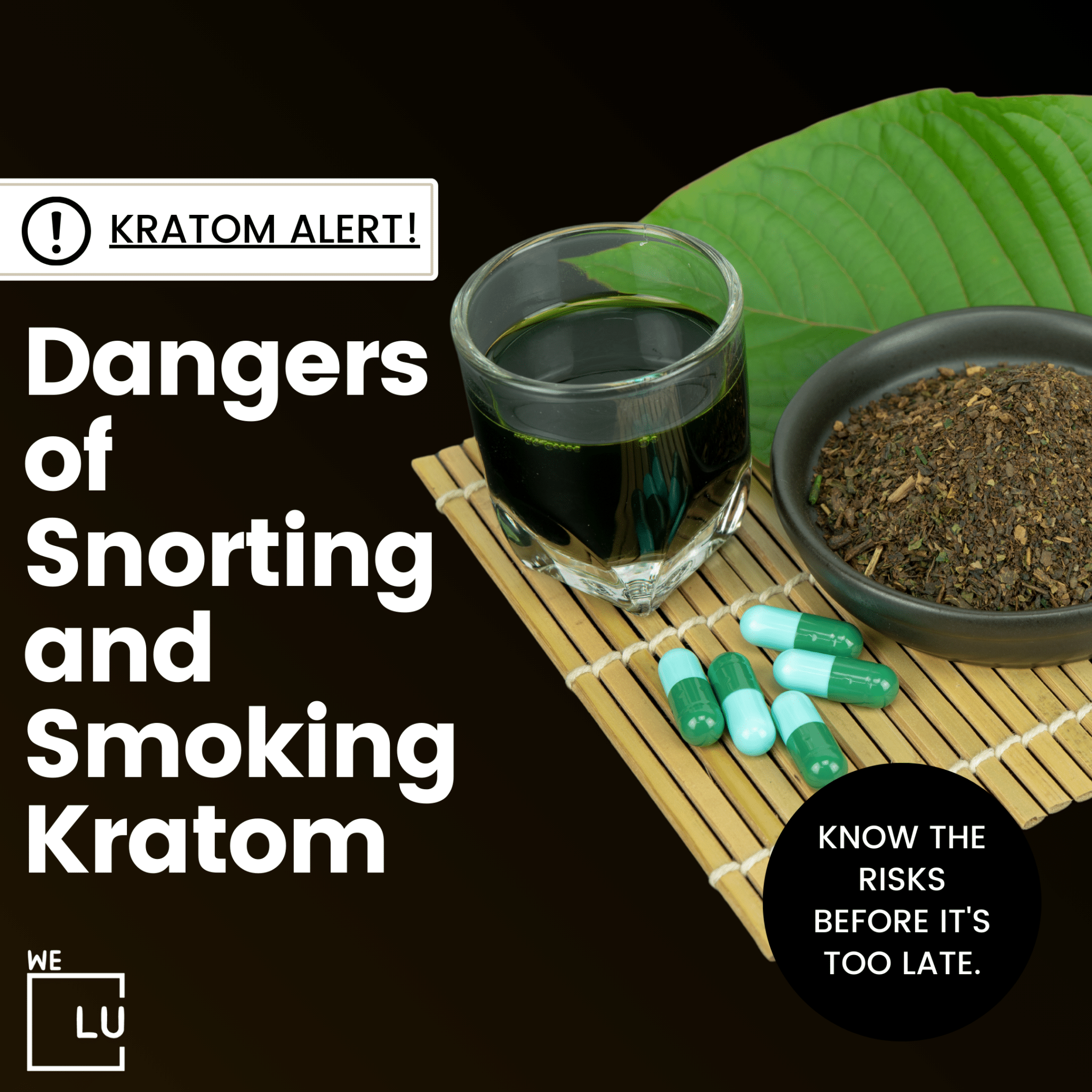How Long Does Oxycodone Take To Work?
Oxycodone is a powerful opioid analgesic used to manage moderate to severe pain. How long does it take for Oxycodone to work? The onset of action for oxycodone can vary depending on the form in which it is administered. Here are some general guidelines:
- Immediate-Release (IR) Formulations: Oxycodone in the immediate-release form typically takes effect within 15 to 30 minutes after ingestion. The results usually peak within 1-2 hours.
- Extended-Release (ER) Formulations: Extended-release formulations, such as OxyContin, are designed to provide a more sustained release of the medication over a longer period. The onset of action for extended-release oxycodone is generally slower, with pain relief starting within 30 minutes to 1 hour and the effects lasting for an extended period, often up to 12 hours.
Individual responses to medication can vary, and factors such as the person’s metabolism, overall health, and whether the drug is taken with or without food can influence how quickly it takes effect.
Use oxycodone only as prescribed by a healthcare professional, as it carries the risk of dependence, tolerance, and addiction. If you have concerns or questions about your medication, it’s best to consult with your healthcare provider.
Factors Affecting How Fast Does Oxycodone Works
How fast does oxycodone work? Several factors can influence how quickly oxycodone takes effect and how long its effects last. Here are some key factors:
- Formulation: The formulation of oxycodone plays a significant role. Immediate-release (IR) formulations generally act more quickly, providing faster pain relief, while extended-release (ER) formulations release the medication gradually over a more extended period.
- Route of Administration: The way oxycodone is administered can affect its onset of action. Common routes include oral (pill or liquid), intravenous (IV), intramuscular (IM), and transdermal (skin patch). Oral administration is the most common, with different absorption rates depending on whether it’s taken with or without food.
- Metabolism and Individual Variability: People metabolize medications differently based on age, liver function, and genetics. Some individuals may metabolize oxycodone more quickly or slowly than others, impacting how fast the drug takes effect and how long its effects last.
- Patient’s Health Status: The individual’s overall health can influence drug absorption and metabolism. Conditions affecting the gastrointestinal tract, liver, or kidneys may alter how the body processes and absorbs oxycodone.
- Food Intake: Taking oxycodone with or without food can affect its absorption. Some formulations may be recommended with food to improve absorption and reduce the risk of gastrointestinal side effects.
- Tolerance and Dependence: Individuals who have been taking oxycodone for an extended period may develop tolerance, meaning they may require higher doses to achieve the same level of pain relief. Dependence can also occur, leading to withdrawal symptoms if the medication is suddenly stopped.
Individuals must follow their healthcare provider’s instructions regarding the use of oxycodone, report any concerns or side effects, and not adjust the dosage without consulting a healthcare professional. Additionally, healthcare providers should carefully consider individual patient factors when prescribing opioids to minimize the risk of adverse effects and misuse.
How Long Does The Effects Of Oxycodone Last?
The duration of the effects of oxycodone can vary depending on the formulation and individual factors. Here are general estimates for the duration of effects:
- Immediate-Release (IR) Formulations: The effects of immediate-release oxycodone typically last around 3 to 6 hours. Pain relief and other effects are noticeable within a relatively short time after taking the medication, but they may wear off more quickly compared to extended-release formulations.
- Extended-Release (ER) Formulations: Extended-release oxycodone, such as OxyContin, is designed to provide a more sustained release of the medication over an extended period. The effects of extended-release formulations can last up to 12 hours or more. This allows for a more prolonged period of pain relief and may require less frequent dosing.
Make sure to follow the prescribed dosing schedule your healthcare professional provides. Avoid adjusting the dosage or frequency without consulting your healthcare provider, as misuse of oxycodone can lead to serious health risks, including addiction and overdose.
Individual factors such as metabolism, overall health, and tolerance can also influence how long the effects of oxycodone last for a specific person. If you have concerns about the duration of action or experience any side effects, discuss them with your healthcare provider. They can adjust your treatment plan to ensure safe and effective pain management.
How Fast Does Oxycodone Work Timeline
| Formulation | Onset of Action | Duration of Effect |
|---|---|---|
| Immediate-Release (IR) | 15-30 minutes (oral) | 3-6 hours |
| Extended-Release (ER) | 30 minutes to 1 hour (oral) | 12 hours or more (oral) |
| Controlled-Release | Varies (depends on specific | Varies (depends on specific |
| (CR) or Sustained-Release | formulation) | formulation) |
| Transdermal (Skin Patch) | Gradual (over 24 hours) | 72 hours |

Skip To:
Learn More:
- Oxycodone Vs Oxycontin. What Is The Difference And Similarities?
- Oxycodone Side Effects, Uses, Interactions, Addiction Facts
- Oxycodone and Hydrocodone, Side Effects, Forms, Dosages, Differences & Interactions
- Does Oxycodone Make You Sleepy? Oxycodone Effects On Sleep
- Oxycodone Withdrawal Symptoms, Timeline, and Detox
- How Long Does Oxycodone Stay In Your System?
- How long do opiates stay in your system? Specifics, Addiction, Drug Processing & Treatment
- Opiate Withdrawal, Effects, Causes, Symptoms, Diagnosis, Complications, Detox & Treatments

Get Your Life Back
Find Hope & Recovery. Get Safe Comfortable Detox, Addiction Rehab & Dual Diagnosis High-Quality Care.
Hotline (855) 695-1160
How Long Does Oxycodone Stay In Your System?
The presence of oxycodone in the body can be detected through drug tests, and the duration it stays in your system can vary based on several factors. Here’s a general guideline:
- Urine: Oxycodone can typically be detected in urine for about 2 to 4 days after the last dose. However, this can vary based on factors such as the individual’s metabolism, the amount of drug taken, and the frequency of use.
- Blood: Oxycodone is usually detectable in blood for a shorter period than urine. It can be present for about 24 hours after the last dose, but this timeframe can be influenced by factors such as liver function and the individual’s overall health.
- Saliva: Saliva tests can detect oxycodone for a shorter duration compared to urine, generally up to 1-4 days after the last use.
- Hair: Oxycodone can be detected in hair follicles for extended periods. It may be detectable for up to 90 days or even longer, depending on the length of the hair and the specific testing methods used.
Individual variations, such as metabolism, hydration levels, and overall health, can influence the elimination of oxycodone from the body. Chronic use and higher doses may also lead to a more extended detection window.
If you have concerns about drug testing or need more specific information based on your situation, it’s advisable to consult with a healthcare professional or a toxicology expert. It’s also crucial to use prescription medications only as directed by a healthcare provider to minimize the risk of adverse effects and potential legal issues related to drug testing.
Get Help. Get Better. Get Your Life Back.
Searching for an Accredited Drug and Alcohol Rehab Centers in Near You?
Even if you have failed previously and relapsed, or are in the middle of a difficult crisis, we stand ready to support you. Our trusted behavioral health specialists will not give up on you. When you feel ready or just want someone to speak to about therapy alternatives to change your life call us. Even if we cannot assist you, we will lead you to wherever you can get support. There is no obligation. Call our hotline today.
FREE Addiction Hotline – Call 24/7How Does Oxycodone Work?
Oxycodone is an opioid analgesic, and it works by binding to specific receptors in the brain and spinal cord known as opioid receptors. The primary mechanism of action involves interaction with mu-opioid receptors, which are part of the body’s endogenous pain control system. Here’s a more detailed explanation of how oxycodone works:
- Opioid Receptor Binding: Oxycodone binds to mu-opioid receptors in the central nervous system (brain and spinal cord). These receptors modulate pain perception and the emotional response to pain.
- Inhibition of Neurotransmitter Release: When oxycodone binds to mu-opioid receptors, it inhibits the release of neurotransmitters, particularly substance P. Substance P is a neurotransmitter that plays a key role in transmitting pain signals.
- Modulation of Pain Perception: By inhibiting the release of substance P and modulating the activity of neurons in the pain pathways, oxycodone reduces pain perception. This results in pain relief for individuals experiencing moderate to severe pain.
- Central Nervous System Depression: Opioids like oxycodone also have central nervous system depressant effects, meaning they can slow down specific physiological processes. This can include a reduction in respiratory rate and sedation.
While oxycodone is effective in managing pain, it also carries risks, including the potential for dependence, tolerance, and addiction. Therefore, it should be used only under the supervision and guidance of a healthcare professional. Additionally, healthcare providers consider the potential benefits and risks when prescribing opioids and alternative pain management strategies may be explored whenever possible.
Comfortable Facilities & Amenities
High-Quality Addiction & Mental Health Rehabilitation Treatment
Rehab Centers TourRenowned California Addiction Center. Serene Private Facilities. Inpatient rehab programs vary.
Addiction Helpline (855) 695-1160Proven recovery success experience, backed by a Team w/ History of:
15+
Years of Unified Experience
100s
5-Star Reviews Across Our Centers
10K
Recovery Success Stories Across Our Network
- Low Patient to Therapist Ratio
- Onsite Medical Detox Center
- Comprehensive Dual-Diagnosis Treatment
- Complimentary Family & Alumni Programs
- Coaching, Recovery & Personal Development Events
Oxycodone Side Effects
Oxycodone, like other opioid medications, can cause various side effects. It’s important to use this medication only under the supervision of a healthcare professional, and any concerning side effects should be promptly reported to your doctor. Common side effects of oxycodone include:
- Nausea and Vomiting: Opioids, including oxycodone, can cause nausea and vomiting, particularly when first starting the medication.
- Constipation: Opioids often cause constipation, and individuals taking oxycodone may need to manage this side effect with increased fluid intake, dietary changes, or the use of stool softeners.
- Drowsiness and Dizziness: Oxycodone can cause drowsiness and dizziness, impairing mental and physical abilities. Avoid driving or operating heavy machinery until you know how the medication affects you.
- Respiratory Depression: In high doses or when misused, opioids can slow down breathing (respiratory depression), which can be life-threatening. This is more common in cases of overdose or when combined with other respiratory depressants, such as alcohol.
- Itching or Rash: Some individuals may experience itching or develop a rash as a side effect of oxycodone.
- Headache: Headaches are a relatively common side effect of oxycodone.
- Sweating: Opioids can cause excessive sweating in some individuals.
- Mood Changes: Opioids can affect mood, leading to changes such as euphoria or, conversely, dysphoria.
- Urinary Retention: Some people may experience difficulty urinating or urinary retention.
- Tolerance and Dependence: Prolonged use of opioids, including oxycodone, can lead to the development of tolerance (requiring higher doses for the same effect) and physical dependence.
Seek immediate medical attention if you experience severe side effects, such as difficulty breathing, chest pain, or signs of an allergic reaction (e.g., swelling of the face or throat, rash, itching). Additionally, misuse or overdose of oxycodone can be life-threatening and require emergency medical attention.
Patients should always take oxycodone precisely as prescribed by their healthcare provider and communicate any concerns or side effects to their healthcare team. Regular follow-up appointments are typically scheduled to monitor the effectiveness of the medication and manage any side effects.

World-class, Accredited, 5-Star Reviewed, Effective Addiction & Mental Health Programs. Complete Behavioral Health Inpatient Rehab, Detox plus Co-occuring Disorders Therapy.
CALL (855) 695-1160End the Addiction Pain. End the Emotional Rollercoaster. Get Your Life Back. Start Drug, Alcohol & Dual Diagnosis Mental Health Treatment Now. Get Free No-obligation Guidance by Substance Abuse Specialists Who Understand Addiction & Mental Health Recovery & Know How to Help.

Risks Of Oxycodone Use
The use of oxycodone, like other opioids, carries several risks, and it should be used only under the supervision and guidance of a healthcare professional. Some of the key risks associated with oxycodone use include:
- Addiction: Oxycodone has the potential to be habit-forming, and individuals using it may develop psychological and physical dependence. This can lead to addiction, characterized by compulsive drug-seeking behavior despite negative consequences.
- Tolerance: With prolonged use, individuals may develop tolerance, meaning that over time, higher doses are needed to achieve the same level of pain relief. Tolerance can contribute to the risk of overdose if individuals increase their dosage without medical guidance.
- Physical Dependence: Prolonged use of oxycodone can lead to physical dependence, and abrupt discontinuation may result in withdrawal symptoms. Withdrawal symptoms can include anxiety, insomnia, nausea, vomiting, diarrhea, sweating, and muscle aches.
- Respiratory Depression: Opioids like oxycodone can depress the respiratory system, slowing down breathing. In cases of overdose or misuse, this can lead to severe respiratory depression, which is a life-threatening condition.
- Overdose: Taking too much oxycodone can result in an overdose, which can be fatal. Symptoms of overdose may include extreme drowsiness, confusion, difficulty breathing, and unconsciousness. Combining oxycodone with other central nervous system depressants, such as alcohol or benzodiazepines, increases the risk of overdose.
- Sedation and Impaired Alertness: Oxycodone can cause drowsiness and impaired alertness, affecting cognitive and motor skills. This can increase the risk of accidents and injuries, especially when driving or operating heavy machinery.
- Gastrointestinal Effects: Common side effects of oxycodone include constipation, which can be severe in some cases and may require additional interventions.
- Interaction with Other Medications: Oxycodone can interact with other medications, potentially leading to adverse effects or reduced effectiveness of one or more drugs. It’s important to inform healthcare providers about all medications being taken.
- Misuse and Diversion: Oxycodone is sometimes misused for non-medical reasons. The diversion of prescription opioids to the illicit market is a significant concern, contributing to the opioid epidemic.
Patients prescribed oxycodone should be closely monitored by their healthcare provider, and the medication should be used strictly according to the prescribed dosage and instructions. Healthcare providers should assess the risks and benefits of opioid therapy, considering alternative pain management strategies when appropriate. Patients and healthcare providers should communicate openly to address concerns and adjust treatment plans as needed.
Experience Transformative Recovery at the We Level Up California Treatment Center.
See our authentic success stories. Get inspired. Get the help you deserve.



Start a New Life
Begin with a free call to an addiction & behavioral health treatment advisor. Learn more about our dual-diagnosis programs. The We Level Up treatment center network delivers recovery programs that vary by each treatment facility. Call to learn more.
- Personalized Care
- Caring Accountable Staff
- World-class Amenities
- Licensed & Accredited
- Renowned w/ 100s 5-Star Reviews
We’ll Call You
How Long Do Opiates Stay in Your System? How Long Do Opiates Stay in Urine, Blood, & Body?
Search We Level Up CA How Long Does Oxycodone Take To Work Drug & Alcohol Rehab / Detox & Mental Health Topics & Resources
Sources
- US Equal Employment Opportunity Commission (EEOC) – Use of Codeine, Oxycodone, and Other Opioids: Information for Employees – https://www.eeoc.gov/laws/guidance/use-codeine-oxycodone-and-other-opioids-information-employees Related Article: How Long Does It Take For Oxycodone To Work, How Long Does It Take Oxycodone To Work, How Long For Oxycodone To Work,
- Drug Enforcement Administration. “Oxycodone.” April 2020. Related Article: How Long Does It Take For Oxycodone To Work, How Long Does It Take Oxycodone To Work, How Long For Oxycodone To Work,
- DEA – Oxycodone – https://www.dea.gov/factsheets/oxycodone Related Article: How Long Does It Take For Oxycodone To Work, How Long Does It Take Oxycodone To Work, How Long For Oxycodone To Work,
- MedLine Plus – Oxycodone – https://medlineplus.gov/druginfo/meds/a682132.html Related Article: How Long Does It Take For Oxycodone To Work, How Long Does It Take Oxycodone To Work, How Long For Oxycodone To Work,
- FDA – Oxycontin Label – https://www.accessdata.fda.gov/drugsatfda_docs/label/2008/020553s059lbl.pdf Related Article: How Long Does It Take For Oxycodone To Work, How Long Does It Take Oxycodone To Work, How Long For Oxycodone To Work,
- Opioid addiction – U.S. National Library of Medicine (medlineplus.gov) Related Article: How Long Does It Take For Oxycodone To Work, How Long Does It Take Oxycodone To Work, How Long For Oxycodone To Work,
- Sadiq NM, Dice TJ, Mead T. Oxycodone. In: StatPearls [Internet]. Treasure Island (FL): StatPearls Publishing; 2023 Jan-. Available from: https://www.ncbi.nlm.nih.gov/books/NBK482226/
- Cohen B, Ruth LJ, Preuss CV. Opioid Analgesics. [Updated 2023 Apr 29]. In: StatPearls [Internet]. Treasure Island (FL): StatPearls Publishing; 2023 Jan-. Available from: https://www.ncbi.nlm.nih.gov/books/NBK459161/
- Chou R, Hartung D, Turner J, et al. Opioid Treatments for Chronic Pain [Internet]. Rockville (MD): Agency for Healthcare Research and Quality (US); 2020 Apr. (Comparative Effectiveness Review, No. 229.) Available from: https://www.ncbi.nlm.nih.gov/books/NBK556253/
- National Academies of Sciences, Engineering, and Medicine; Health and Medicine Division; Board on Health Sciences Policy; Committee on Pain Management and Regulatory Strategies to Address Prescription Opioid Abuse; Phillips JK, Ford MA, Bonnie RJ, editors. Pain Management and the Opioid Epidemic: Balancing Societal and Individual Benefits and Risks of Prescription Opioid Use. Washington (DC): National Academies Press (US); 2017 Jul 13. Available from: https://www.ncbi.nlm.nih.gov/books/NBK458660/ doi: 10.17226/24781
- Zullo AR, Danko KJ, Moyo P, et al. Prevention, Diagnosis, and Management of Opioids, Opioid Misuse, and Opioid Use Disorder in Older Adults [Internet]. Rockville (MD): Agency for Healthcare Research and Quality (US); 2020 Nov. (Technical Brief, No. 37.) Available from: https://www.ncbi.nlm.nih.gov/books/NBK564144/




